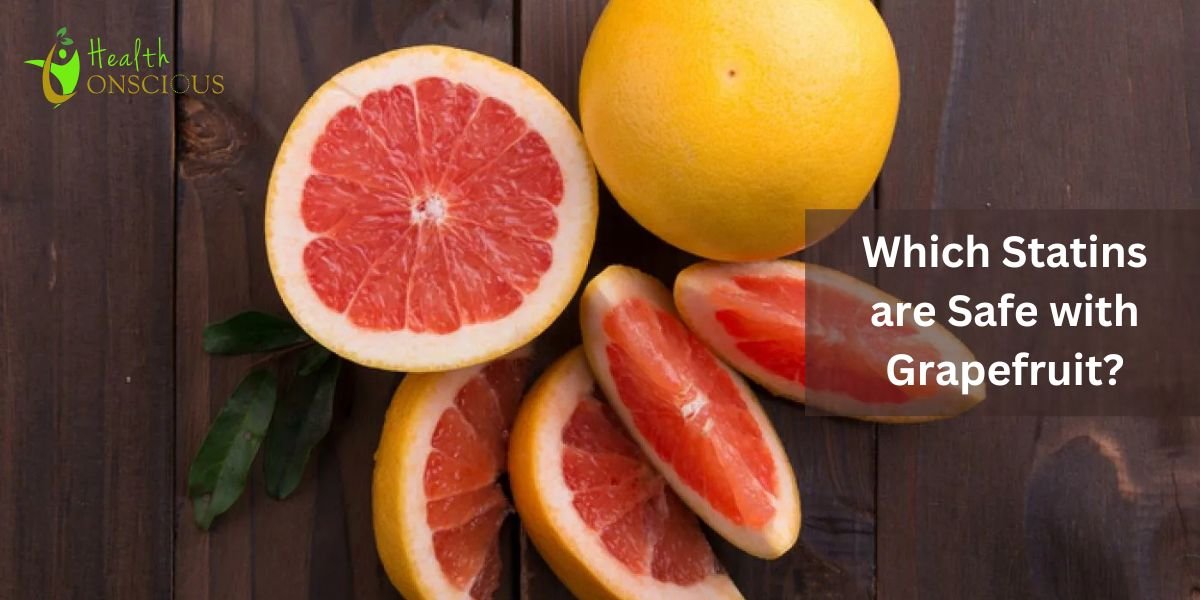Grapefruit, a seemingly innocent citrus fruit, can pose a significant risk when combined with certain medications, particularly statins. Statins are a class of drugs widely prescribed to lower cholesterol and reduce the risk of cardiovascular disease. However, understanding the interaction between grapefruit and statins is crucial for patient safety. This article will explore which statins are generally considered safer to take with grapefruit while emphasizing the importance of consulting your doctor or pharmacist before making any decisions.
The Grapefruit Problem: A Matter of Enzymes
Grapefruit contains furanocoumarins, compounds that interfere with an enzyme called CYP3A4, which plays a vital role in metabolizing many medications, including some statins. When you consume grapefruit, these furanocoumarins inhibit CYP3A4, reducing the body’s ability to break down certain drugs. This can lead to higher levels of the drug in the bloodstream, which increases the risk of serious side effects such as muscle pain, weakness, and, in rare cases, rhabdomyolysis—a serious muscle breakdown that can lead to kidney damage.
The interaction between grapefruit and statins can be complex, as not all statins are metabolized by CYP3A4. Some are metabolized by other enzymes or pathways, making them less susceptible to grapefruit’s effects. Below, we’ll break down which statins are considered safer to take with grapefruit and which ones should generally be avoided.
Which Statins Are Affected?
Not all statins are affected equally by grapefruit. Some statins are metabolized primarily by other pathways and are less susceptible to grapefruit’s effects. Here are the key statins and their interaction levels with grapefruit:
Statins Considered Safer to Take with Grapefruit:
- Pravastatin (Pravachol):
- Pravastatin is generally considered to have the lowest risk of interaction with grapefruit. This is because it is not significantly metabolized by CYP3A4.
- Rosuvastatin (Crestor):
- Rosuvastatin can interact with grapefruit at very high doses, but standard dosages are generally considered relatively safe. Lower doses (10 mg or less) are often recommended when consuming grapefruit.
- Pitavastatin (Livalo, Zypitamag):
- Pitavastatin is another statin considered to have minimal interaction with grapefruit. It is metabolized by different enzymes and is therefore less affected by grapefruit’s compounds.
- Fluvastatin (Lescol):
- Fluvastatin is also thought to have a lower risk of interaction with grapefruit compared to other statins.
Statins to Approach with Caution (or Avoid) When Consuming Grapefruit:
- Atorvastatin (Lipitor):
- Atorvastatin is one of the statins most likely to interact with grapefruit and is generally recommended to be avoided when consuming grapefruit. The interaction could significantly increase atorvastatin levels in the bloodstream, potentially causing harmful side effects.
- Simvastatin (Zocor):
- Like atorvastatin, simvastatin is known to have significant interactions with grapefruit. It is usually advised to avoid grapefruit when taking simvastatin. Consuming grapefruit with simvastatin can lead to higher drug levels, increasing the risk of adverse effects.
Other Considerations: Individual Variability and Form of Grapefruit
Even when using “safer” statins, it’s important to recognize that individual reactions can vary. Some people may be more sensitive to grapefruit’s effects, regardless of which statin they are taking. Additionally, the form of grapefruit consumed matters: grapefruit juice, especially in large amounts, poses the highest risk for interaction. However, eating the fruit itself can still lead to interactions, though to a lesser degree.
Other Medications: The Complexity of Multiple Drugs
If you are taking other medications in addition to a statin, the risk of interactions with grapefruit becomes even more complex. Grapefruit can interfere with other drugs as well, which may compound the potential for serious side effects. Always inform your healthcare provider about all the medications you’re taking, including over-the-counter drugs and supplements, so they can provide the safest recommendations.
The Golden Rule: Talk to Your Doctor or Pharmacist
The information provided here is for general knowledge and should not substitute for professional medical advice. It’s essential to discuss your specific situation with your doctor or pharmacist before making any changes to your medication regimen. They can assess your risk factors, review all your medications, and provide personalized recommendations about consuming grapefruit while on a statin.
Even if a statin has a mild interaction with grapefruit, your healthcare provider might suggest taking it at night and having grapefruit in the morning to reduce the risk. They will consider your full medical history and suggest the safest approach for your health.
Statin Summary Table: Safe and Unsafe Combinations with Grapefruit
| Statin | Interaction with Grapefruit | Recommendation |
|---|---|---|
| Pravastatin | Low risk of interaction | Safe to use with grapefruit |
| Rosuvastatin | Minimal risk (low doses) | Safe to use with caution |
| Pitavastatin | Low risk of interaction | Safe to use with grapefruit |
| Fluvastatin | Low risk of interaction | Safe to use with grapefruit |
| Atorvastatin | High risk of interaction | Avoid grapefruit |
| Simvastatin | High risk of interaction | Avoid grapefruit |
Conclusion: Understanding the Risks of Grapefruit and Statins
The combination of grapefruit and statins can pose serious health risks. While some statins, such as Pravastatin, Rosuvastatin, and Pitavastatin, are generally considered safer to take with grapefruit, others, like Atorvastatin and Simvastatin, should be avoided due to potentially harmful interactions.
As everyone’s body processes medications differently, it is essential to discuss any dietary changes, including grapefruit consumption, with your healthcare provider. By consulting with your doctor or pharmacist, you can receive personalized advice tailored to your specific health needs and medication regimen.



